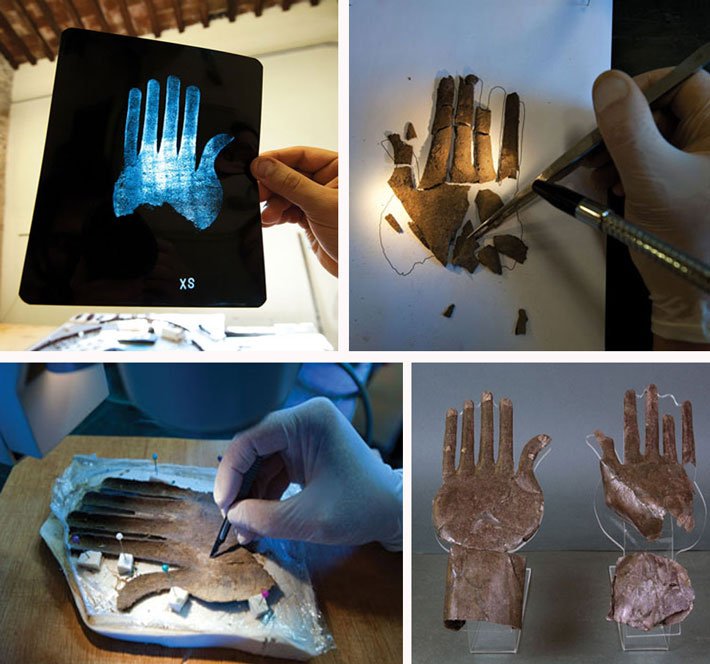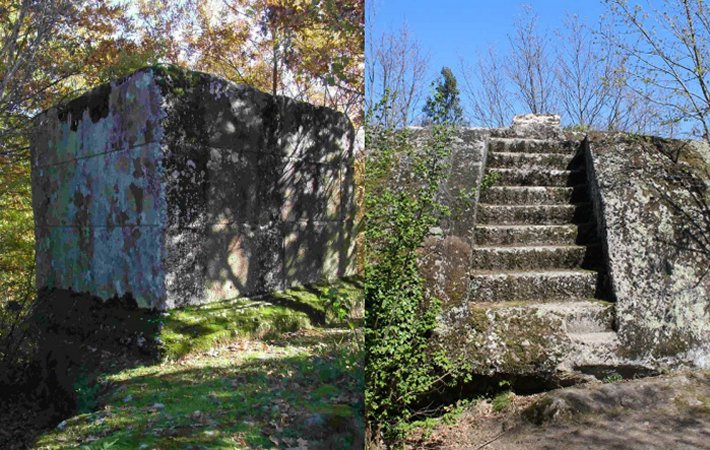Mysterious Etruscan Stone Structures Hidden In The Malano Forest – Evidence Of Ancient Unknown High-Tech Knowledge?
Jan Bartek - AncientPages.com - The Etruscans, one of Europe's most mysterious ancient peoples, are believed to have migrated from Lydia in modern western Turkey, settling in northern and central Italy nearly 3,000 years ago. The Etruscan civilization founded many cities in Italy and profoundly influenced ancient Roman culture.
The Etruscans produced colorful frescoes. This is a 5th century BC fresco of dancers and musicians, Tomb of the Leopards, Monterozzi necropolis, Tarquinia, Italy. Image source
They were skilled navigators and incredibly talented craftsmen who left behind stunning art renowned for its vitality and often vivid coloring. Many of the Etruscan colorful wall paintings frequently capture scenes of how their people enjoy themselves at parties and banquets.
The Etruscans Left Behind Strange Artifacts And Buildings
Despite the fact that these ancient people were much closer to us in time, they were even more enigmatic and inaccessible than other ancient cultures such as Crete, Mesopotamia, or Mycenae, and we still have much to learn about the mysterious Etruscan civilization.
Historians and archaeologists can tell a lot about the Etruscans, but some of their unearthed artifacts and structures have been challenging to interpret. The Etruscans' religious beliefs, traditions, and customs are a complex subject.
Some of their buildings were obviously important, but their purpose was a riddle. Scientists have discovered a vast network of Neolithic tunnels criss-crossing several European countries. This subterranean network was built several millennia ago. Following these ancient underground tunnels, we discovered that there are a series of underground structures deep beneath the city of Orvieto, Italy. According to sources, during the 6th- 4th centuries BC, the town of Orvieto was a culturally and economically developed Etruscan city. One of these underground structures is a strange pyramidal structure. Unfortunately, scientists say they have no idea what it is, and the purpose of the underground Etruscan pyramid remains an ancient mystery.
The burial practices of the Etruscans were not unlike those of the Romans. Like most ancient civilizations, the Etruscans believed in an afterlife, and they buried their dead with grave goods, helping them to get a good start on their journey to a new and unknown world. Scientists have discovered amulets, figurines, and many other symbolic objects in Etruscan tombs.
However, one of the most extraordinary discoveries was made when scientists encountered a most spectacular place, namely, "The Tomb of the Silver Hands," a monumental place with a long corridor with an atrium open to the sky and leading to three burial chambers that contained the remains of at least three individuals.
(Marco Merola)The silver hands were taken to a nearby laboratory. There (top row, left to right) researchers X-rayed them, fit the pieces of the right hand back together, and (bottom row, left to right) carefully cleaned the more intact left hand. The result: two completely restored and conserved hands.
This tomb must have belonged to high-ranking Etruscan society members regardless of gender. Inside the tomb, scientists found “something unusual lying on the ground among a variety of artifacts—two well-preserved silver hands with traces of gold on the fingers and gold-plated fingernails.”
It’s one of the most perplexing artifacts ever found inside Etruscan tombs.
Mysterious Ancient Monuments Hidden In Selva di Malano
The mysterious stone altars and megaliths, hidden in the Selva di Malano ( Malano forest), show a darker side of the Etruscans.
This site is located in the northernmost part of the town of Soriano, on a slope at the extreme foothills of the Cimini Mountains. Here, the Etruscans used the opportunity to carve massive rock altars from volcanic eruptions. One of them is the Sasso del Predicatore (Stone of the Preacher) structure, which was most likely used as a Pagan altar.
Right: One of the odd Etruscan structures found in the Malano forest. Image source - Left: Stairs leading to the top of the altar. Image source
The steps leading to the tops suggest the Stone of the Preacher could have been used for astronomical observations, but some scientists suggest it may have been an Etruscan place of worship where humans were sacrificed.
See also: Mysterious Fontainebleau Forest – Home To A Lost Civilization
Another possibility attempting to explain the cubic altar’s origin is that the structure was created by an unknown, advanced, lost civilization that was present in the Malano forest long before the arrival of the Etruscans. We simply don’t know. What we know is that several Roman tombs and a small Romanesque church are not far from these mysterious structures. Still, these have the usual architecture associated with this historical time period.
Updated on October 6, 2023
Written by Jan Bartek - AncientPages.com Staff Writer
Copyright © AncientPages.com All rights reserved. This material may not be published, broadcast, rewritten or redistributed in whole or part without the express written permission of AncientPages.com
Expand for referencesMore From Ancient Pages
-
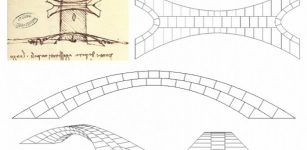 Leonardo da Vinci’s 280-Meter Long Bridge Design – Tested
Archaeology | Oct 17, 2019
Leonardo da Vinci’s 280-Meter Long Bridge Design – Tested
Archaeology | Oct 17, 2019 -
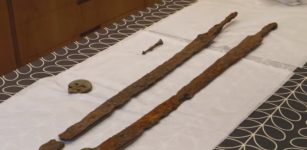 Unique Ancient Roman Cavalry Swords Found In Cotswolds, UK
Archaeology | Sep 18, 2023
Unique Ancient Roman Cavalry Swords Found In Cotswolds, UK
Archaeology | Sep 18, 2023 -
 Agriculture In North America Led To Changes In Age-Independent Mortality
Archaeology | Jan 24, 2023
Agriculture In North America Led To Changes In Age-Independent Mortality
Archaeology | Jan 24, 2023 -
 New Attempt To Solve The Easter Island Mystery – What Did Rapa Nui Look Like Before Europeans Arrived?
Archaeology | Sep 20, 2017
New Attempt To Solve The Easter Island Mystery – What Did Rapa Nui Look Like Before Europeans Arrived?
Archaeology | Sep 20, 2017 -
 On This Day In History: Viking Forces Laid Siege To Paris – On Nov 25, 885
News | Nov 25, 2016
On This Day In History: Viking Forces Laid Siege To Paris – On Nov 25, 885
News | Nov 25, 2016 -
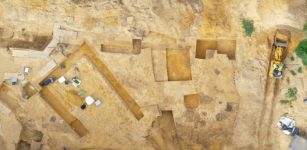 Unusual Mini Temples Discovered In Ancient Roman Camp In Haltern, Germany
Archaeology | Nov 16, 2023
Unusual Mini Temples Discovered In Ancient Roman Camp In Haltern, Germany
Archaeology | Nov 16, 2023 -
 On This Day In History: Canute – Cnut The Great – Danish King Of England Died – On Nov 12, 1035
Featured Stories | Nov 12, 2016
On This Day In History: Canute – Cnut The Great – Danish King Of England Died – On Nov 12, 1035
Featured Stories | Nov 12, 2016 -
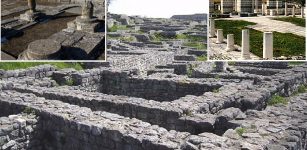 Pliska: Ancient City Ahead Of Its Time With Secret Underground Tunnels, Sewage And Heating Systems
Featured Stories | May 22, 2017
Pliska: Ancient City Ahead Of Its Time With Secret Underground Tunnels, Sewage And Heating Systems
Featured Stories | May 22, 2017 -
 Olympe De Gouges – First French Feminist Challenged Maximilien de Robespierre And The Jacobins
Featured Stories | Nov 12, 2018
Olympe De Gouges – First French Feminist Challenged Maximilien de Robespierre And The Jacobins
Featured Stories | Nov 12, 2018 -
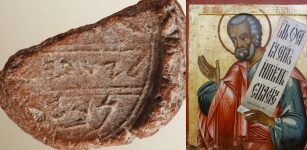 Ancient Seal Offers First Biblical Evidence Of The Prophet Isaiah?
Archaeology | Feb 27, 2018
Ancient Seal Offers First Biblical Evidence Of The Prophet Isaiah?
Archaeology | Feb 27, 2018 -
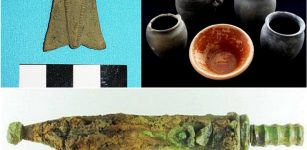 Rare Roman Brooch And A Miniature Sword – Unearthed
Artifacts | Jan 18, 2016
Rare Roman Brooch And A Miniature Sword – Unearthed
Artifacts | Jan 18, 2016 -
 Orichalcum: Mysterious Metal Linked To Legendary Atlantis Discovered In Shipwreck
Archaeology | Jan 8, 2015
Orichalcum: Mysterious Metal Linked To Legendary Atlantis Discovered In Shipwreck
Archaeology | Jan 8, 2015 -
 Ancient History Of Body Modification In Mesoamerica Practiced By The Aztecs, Maya And Olmecs
Ancient Traditions And Customs | Jul 12, 2017
Ancient History Of Body Modification In Mesoamerica Practiced By The Aztecs, Maya And Olmecs
Ancient Traditions And Customs | Jul 12, 2017 -
 Mystery Of The 80 Million-Year-Old Sharks’ Teeth In The City Of David
Archaeology | Jul 4, 2021
Mystery Of The 80 Million-Year-Old Sharks’ Teeth In The City Of David
Archaeology | Jul 4, 2021 -
 First Evidence Common People Drank Wine In Troy (Not Just The Elites)
Archaeology | Mar 31, 2025
First Evidence Common People Drank Wine In Troy (Not Just The Elites)
Archaeology | Mar 31, 2025 -
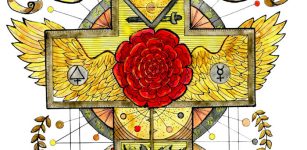 Rosicrucians: Facts And History About The Mysterious Secret Society
Featured Stories | Oct 20, 2016
Rosicrucians: Facts And History About The Mysterious Secret Society
Featured Stories | Oct 20, 2016 -
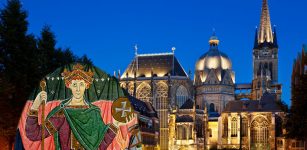 Does This Cathedral Offer Evidence Our Calendar Is ‘Missing’ 297 Years?
Featured Stories | May 6, 2022
Does This Cathedral Offer Evidence Our Calendar Is ‘Missing’ 297 Years?
Featured Stories | May 6, 2022 -
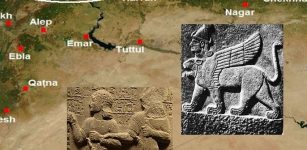 Ancient City Of Carchemish Will Soon Be Ready To Show Its Historical Treasures
Archaeology | Jun 20, 2019
Ancient City Of Carchemish Will Soon Be Ready To Show Its Historical Treasures
Archaeology | Jun 20, 2019 -
 Amazing Giant Rock Engravings Discovered In South America May Be The World’s Largest
Archaeology | Jun 5, 2024
Amazing Giant Rock Engravings Discovered In South America May Be The World’s Largest
Archaeology | Jun 5, 2024 -
 Remains Of A 2,200-Year-Old Roman Fountain Discovered In Assos, Turkey
Archaeology | Aug 17, 2022
Remains Of A 2,200-Year-Old Roman Fountain Discovered In Assos, Turkey
Archaeology | Aug 17, 2022


